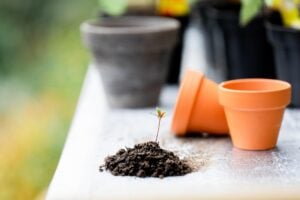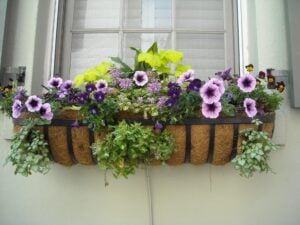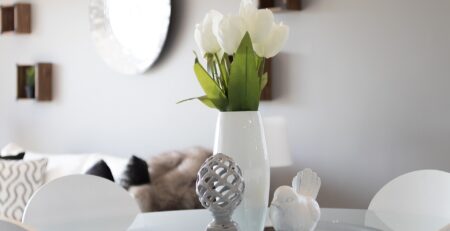Gardening for Renters
Understanding Your Rental Agreement
Before embarking on your gardening journey, it’s crucial to understand the specifics of your rental agreement.
Checking your lease is an essential step to ensure you are fully informed about any restrictions your landlord may impose regarding outdoor modifications. Some agreements might have clear clauses dictating what can or cannot be done in shared or private garden spaces, which will help you dodge conflicts or issues that could arise later on.
Take the time to read through your rental terms carefully, focusing particularly on sections that mention alterations, landscaping, or even general property care. Many landlords are open to tenants beautifying their living spaces, provided they are informed, and the changes are compliant with property guidelines. If the documentation doesn’t specify rules regarding gardening, don’t hesitate to reach out for clarification.
This proactive approach not only ensures compatibility with your landlord’s expectations but also builds a respectful relationship. If they know you’re invested in looking after the property, they may be less likely to mind any improvements you wish to make. Having this conversation can also result in beneficial information that could help in building a mutual agreement, and sometimes landlords may even offer support for your gardening efforts, especially if they see it enhances the property’s appeal.
Tailoring Your Garden to Limited Space
Crafting the perfect garden when renting means adapting your approach to suit the unique characteristics of your available space.
Start by assessing the conditions of your property. For instance, consider the amount of sunlight that different areas receive throughout the day. A sunny balcony may be ideal for growing a variety of herbs, colourful flowers, or even vegetables with a modest footprint, while a shaded nook might require selecting plants that thrive in lower light conditions, such as ferns or hostas.
When it comes to choosing the right plants, think about their portability and maintenance needs. Compact plants that don’t grow excessively large are practical choices, allowing you to cultivate a vibrant garden without taking up too much valuable space.
For example, if your available area is limited, consider opting for dwarf varieties of plants, which can provide the enjoyment of gardening without overwhelming your space. By selecting suitable plants that align with the environment and the restrictions you’re working within, you can create a colourful, lively garden that enhances your living area.
It’s also wise to consider grouping plants with similar watering and light requirements together. This not only simplifies your maintenance routine but also creates a cohesive look in your garden space.

Embracing Portable Gardening Options
Flexibility is vital for renters, making portable gardening strategies particularly appealing.
Container gardens are an excellent choice for those living in flats or homes with limited outdoor access. Choosing various pots or planters allows you to grow your plants almost anywhere, whether on a balcony, patio, or windowsill. Containers also mean that if you decide to relocate, you can take your cherished plants along with you, ensuring they stay a part of your life wherever you go.
When selecting containers, opt for lightweight designs that are easily moved. This adaptability allows you to rearrange your gardening setup according to weather conditions or your preferences. Raised beds can also be an incredible option for renters who are lucky enough to have a garden space, as they can be built without permanently altering the property structure. By positioning these beds strategically, you can utilise sunlight effectively while keeping the overall design flexible.
Vertical gardening is another innovative way to make the most of your limited outdoor space. Consider using wall-mounted planters or trellises, as they can introduce greenery without occupying valuable ground space. These vertical systems allow climbing plants, such as peas or beans, to flourish while simultaneously adding depth and dimension to your garden.
Additionally, window boxes or railing planters serve as excellent solutions for maximising space. These additions not only beautify your outdoor areas but can also house useful herbs and flowers, enriching your culinary experiences at home. You could even incorporate plant stands to create layers in your garden, making it visually appealing while still being highly functional.

Maximising Small Garden Spaces
Even the most compact spaces can become thriving garden areas with thoughtful planning and innovative techniques.
If you have limited space, such as a small balcony or a single windowsill, you can still cultivate an impressive assortment of plants. Look for compact, high-yield plants that can deliver a bounty despite their size. Herbs like basil and mint, salad greens, or even dwarf tomato varieties are perfect for patios, and they can be harvested easily for culinary use.
Utilising vertical gardening techniques can expand your gardening capabilities significantly in smaller areas. Wall planters can be placed vertically, allowing for multi-layered growth without sacrificing floor space. You might also consider trellises for climbing plants – not only do they help utilise vertical height, but they also create an interesting aesthetic appeal.
Aeration and drainage are crucial for any gardening setup, especially in small spaces, where overwatering can quickly lead to issues like root rot. Ensure your pots have adequate drainage holes, and consider using a well-draining potting mix designed for containers. Stacking pots or employing tiered plant stands maximises both aesthetics and usable space, allowing you to enjoy a lush garden without being cramped for room.
Arranging your plants efficiently can significantly impact their growth and health. Position sun-loving plants in the brightest areas of your garden, while placing those that prefer shade in less illuminated spots. Regular rotation can also help maintain healthy growth, ensuring that every plant receives equal sunlight over time. This thoughtful arrangement not only helps plants thrive but can also create a visually appealing layout for your garden.
To enhance the appearance of your small garden, consider introducing decorative elements like colourful pots, wind chimes, or even fairy lights. These touches can elevate the overall ambience, transforming a simple balcony or windowsill into a charming retreat.

Engaging in Community Gardening Initiatives
If your rental lacks adequate outdoor space, community gardens can provide a perfect solution for your gardening ambitions.
Community gardens are often established in urban areas and offer shared plots where residents can grow their plants alongside like-minded individuals. These gardens typically foster a sense of community and collaboration, making them an excellent avenue for gardeners of all experience levels. By participating in a community garden, you can share knowledge, resources, and even fresh produce with your neighbours, enhancing the social aspect of gardening. You might even meet new friends who share your passion.
Many community gardens also provide resources that make gardening more accessible, including tools, compost, and sometimes educational workshops. These communal spaces promote sustainable gardening practices and are often maintained collectively, sharing the responsibility of care among participants.
If you and your neighbours have a shared interest in gardening, consider jointly creating a small community garden in available shared spaces, such as a courtyard, rooftop, or park area. Collaborating with others can turn under-utilised areas into productive green spaces, enhancing the surroundings for everyone while also strengthening community ties.
In addition to the benefits of cultivating plants, community gardening initiatives often provide educational opportunities. Participating in workshops or sharing gardening techniques allows you to expand your knowledge about plants, pest control, and sustainable practices, all of which can be directly applied to your home gardening efforts.
Conclusion
Gardening while renting may present unique challenges, but it also offers exciting opportunities to cultivate creativity and innovation in how you approach green living. By understanding your rental agreement, tailoring your gardening choices to suit your space, and embracing community initiatives, you can develop a beautiful garden regardless of your limitations.
The joy of nurturing plants, growing your own herbs and vegetables, and witnessing life flourish is within reach, even for those in the most cramped living situations. With a focus on portable and adaptable gardening methods, you can create a thriving sanctuary tailored to your preferences and lifestyle.
Moreover, embracing gardening can deeply enhance your mental well-being. The act of tending to plants offers a therapeutic escape from daily stresses, allowing you to connect with nature and gain satisfaction from nurturing life, however small.
So gather your tools, connect with your community, and let your green thumb flourish! Regardless of how tiny your patch of earth might be, there’s an abundant world of possibilities waiting for you. Your journey into gardening, even while renting, can blossom into an enriching adventure that brightens your living space and uplifts your spirit. Take the first step today, and you may discover a newfound passion that enhances your life in immeasurable ways.
ARE YOU READY TO START INVESTING?
Subscribe to our mailing list now for exclusive deals, investment guides and the latest information from the property market.







